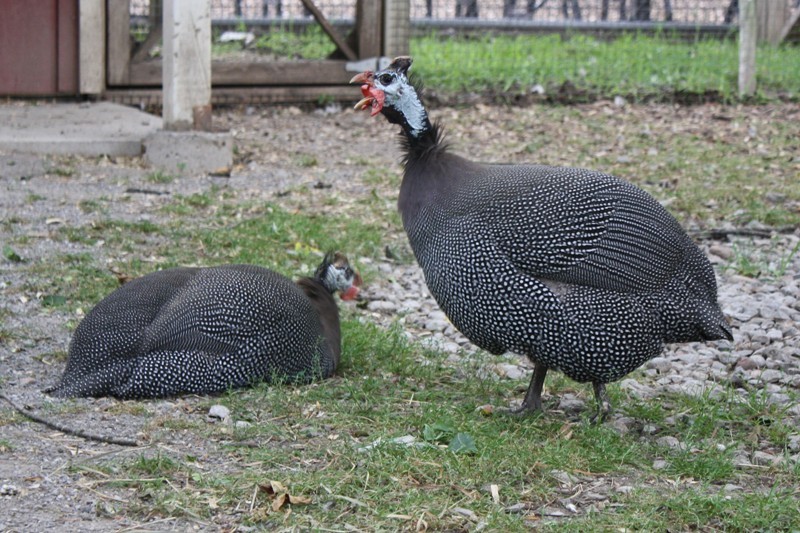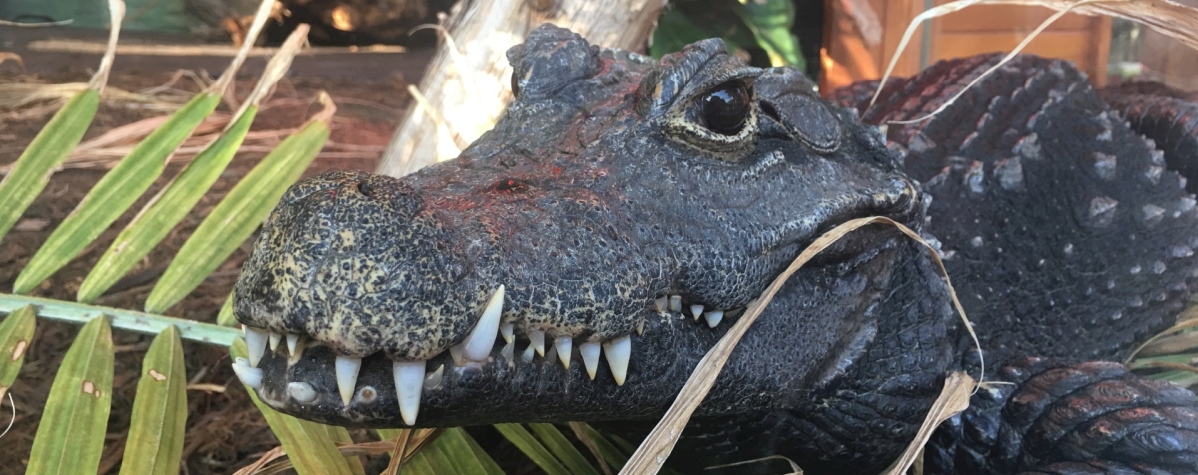Helmeted Guinea Fowl
Scientific Classification 
| Species |
Ara severus |
| Kingdom | Animalia |
| Phylum | Chordata |
| Class | Aves |
| Order | Psittaciformes |
| Family | Psittacinae |
| IUCN Status | Least Concern |
Appearance and lifespan
The Helmeted Guinea fowl is the best known of the Guinea fowl bird family. The Helmeted Guinea fowl is a large bird, 53 to 58 cm (20 to 22 in), with a round body and small head. They weigh about 1.3 kg (2.8 lbs), both males and females are around the same size. The body plumage is grey-black spangled with white dots. Like other Guinea fowl, this species has a bare head; in this case it has a dull yellow or reddish bony knob, and red and blue patches of skin. The wings are short and rounded, and the tail is also short.
Helmeted Guinea fowl live as long as 15 years in the wild.
Behavior and reproduction
Helmeted Guinea fowl breed in Africa, mainly south of the Sahara, and have been introduced into the West Indies and southern France. It breeds in warm, fairly dry and open habitats with scattered shrubs and trees such as savanna or farmland. It usually breeds in or just after the rainy season. The nest is well-hidden and generally unlined scrape. A clutch is normally 6-12 eggs which the female incubates for 26-28 days. The eggs are large and an incubating bird could not realistically cover significantly more than a normal clutch. The chicks are yellow with brown markings and rapid wing growth allows them to flutter onto low branches barely a week after hatching. Breeding pairs mate for life and both the male and female care for the chicks.
Outside the breeding season Helmeted Guinea fowl stay in a flock typically of about 30 birds that also roost together. Guinea fowl are particularly well-suited to eat large quantities of ticks, which prevents the spread of Lyme disease. These birds are terrestrial, and prone to run rather than fly when alarmed, they have a short-lived explosive flight and rely on gliding to cover extended distances. Helmeted Guinea fowl are great runners, and can walk 15 km (9 miles) or more in a day.
Ecology and habitat
Helmeted Guinea fowl are found in West Africa, north-eastern Africa, southern Arabia and southern Africa. They are also common in southern and western Kenya, rare in the North and almost absent from the North-East and much of eastern Kenya. Helmeted Guinea fowl prefer bush, woodland and shrubbier grassland generally in moister areas.
Their diet consists of a variety of animal and plant food; seeds, fruits, greens, snails, spiders, worms and insects, frogs, lizards, small snakes and small mammals.
Food at the Zoo
At the zoo the Helmeted Guineafowl are fed gamebird pellets, poultry grain, lettuce and carrot tops, oyster shell, super worms and poultry grit.
Threats
Helmeted Guinea fowl are not threatened, but there has been a recent decline in parts of its range, most likely due to loss of habitat. This species is Southern Africa's most popular land gamebird hunted for sport and is also domesticated in some areas.
Did you know?
- Helmeted Guinea fowl were first domesticated by the ancient Egyptians.
- Some Helmeted Guinea fowl are completely white (colour-phase).
- Domesticated birds are sometimes called "Gleanies".


